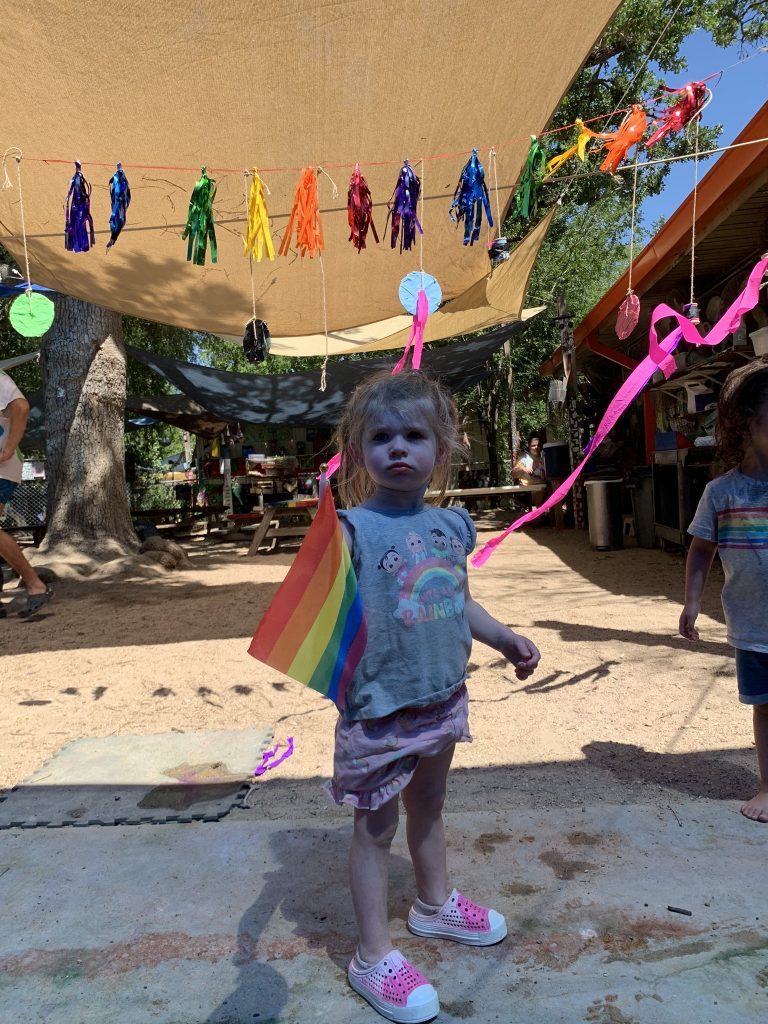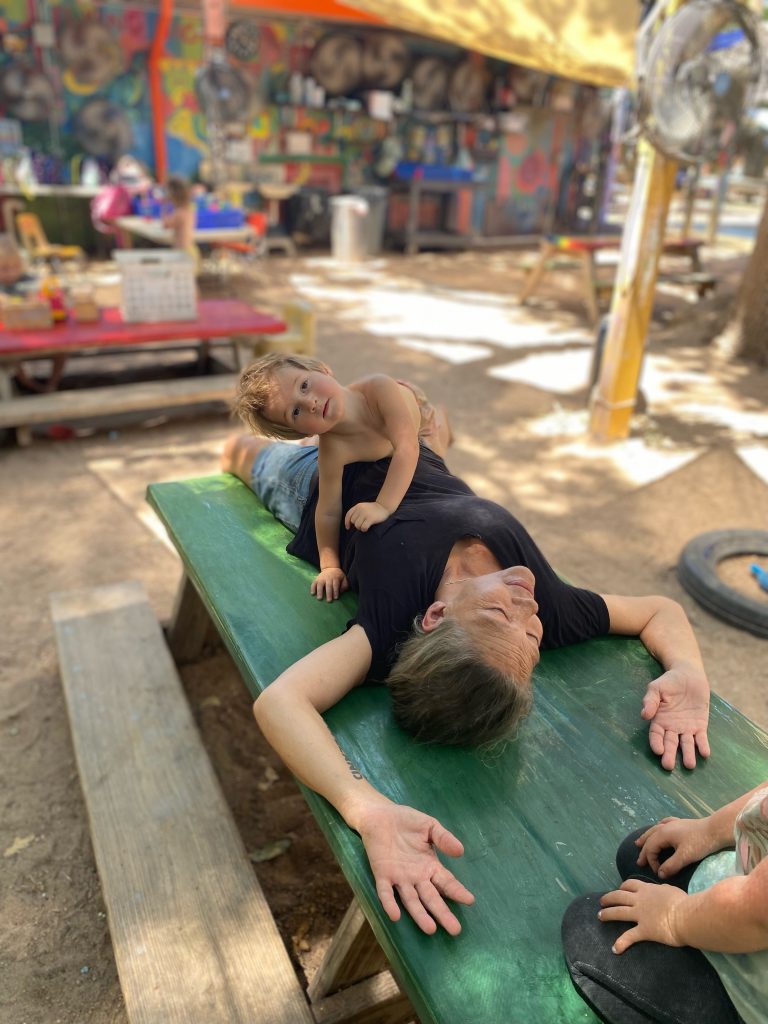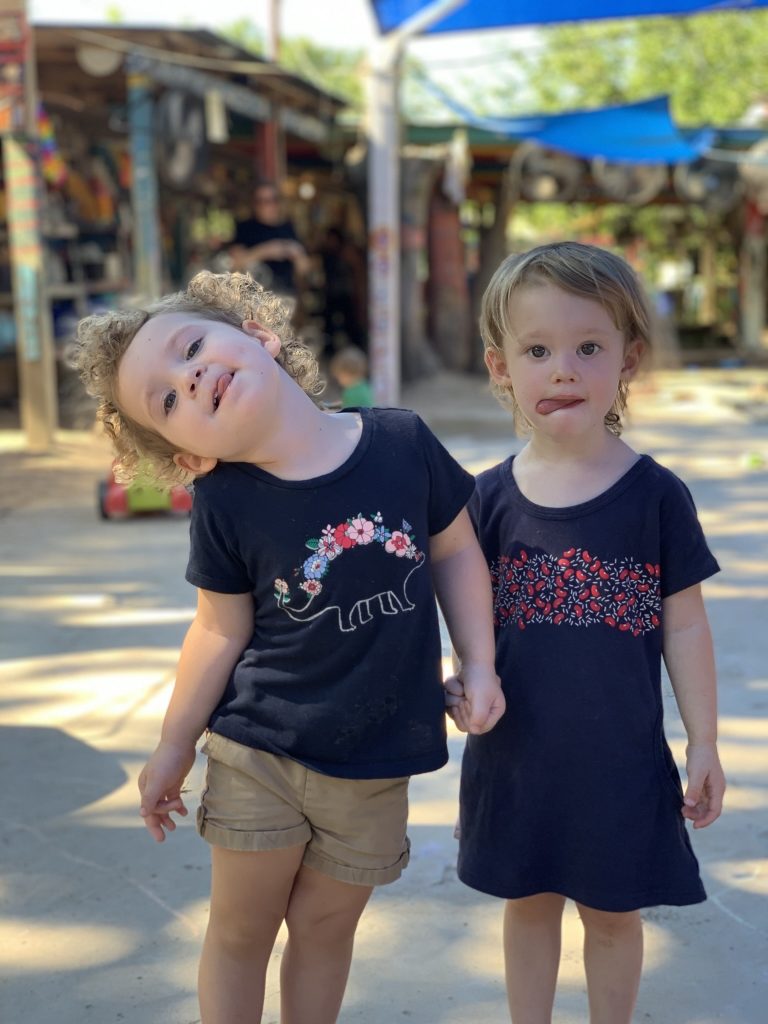Our curriculum can really be summed up with one tiny but grand word: Art. We believe that art for the young child, and indeed for all of us, integrates every discipline in a creativity-fostering and fluid way. Language arts, science, math, music, history, social awareness, and self-exploration are only a few of the areas touched upon by the artist at work. As we work side by side with our students we discuss techniques, ideas, material properties, and any of a myriad of topics, all within one sitting. As we talk about our art the children’s verbal prowess is challenged and enhanced. As they cut, paste, paint, and draw, their motor skills are honed. As we utilize recycled materials, their social awareness and understanding of cycles and systems becomes broadened. We count beads, discuss shapes, beat out rhythms, dance, and explore the complicated concepts of harmony and the physical property of musical instruments. With the arts our curriculum becomes fluid and the decontextualized way of learning, as it so often exists in schools, is eradicated.
We follow no themes, have no units or formalized lessons, and are never found with children sitting before a looming teacher. We learn together, side by side with our hands and our hearts.
For anyone who has ever ventured into the Art Room during its peak hours of use, it should be obvious that we believe our children should have access to all the materials that the school possesses – in any combination and according to their own schedule. In order for art to live up to its potential as not only a purely creative pursuit, but also a scientific, mathematical, linguistic and kinesthetic undertaking, we must allow the children to combine materials, make mistakes and, well, make a big mess.
When a child is really learning something about the physical properties of color, she will almost inevitably end up with a brown painting. We have to recognize that the process through which she went to arrive at that dark, dripping picture was an important learning event, and that she saw many engaging colors on the road to the brown product. Teachers who say not to mix the paints because of the “icky” brown results are not seeing the bigger picture – just the little brown one. Even now there are “educational” films circulating among the elementary schools of our country that implore children not to mess up a perfectly beautiful painting by mixing complimentary colors that will result in drab olives and browns. Although, have you ever noticed that when you mix red and yellow paint together the result is seldom the color of a ripe Sunkist orange? We encourage a more hands-on approach to an understanding of processes such as the “color wheel”. We encourage a more hands-on approach to everything. In order for us to structure the Art Room so that the kids have better access to the materials, we have it organized so that they will always know exactly where the materials are and will be able to get to them, further enabling them to be the masters of their creativity.


